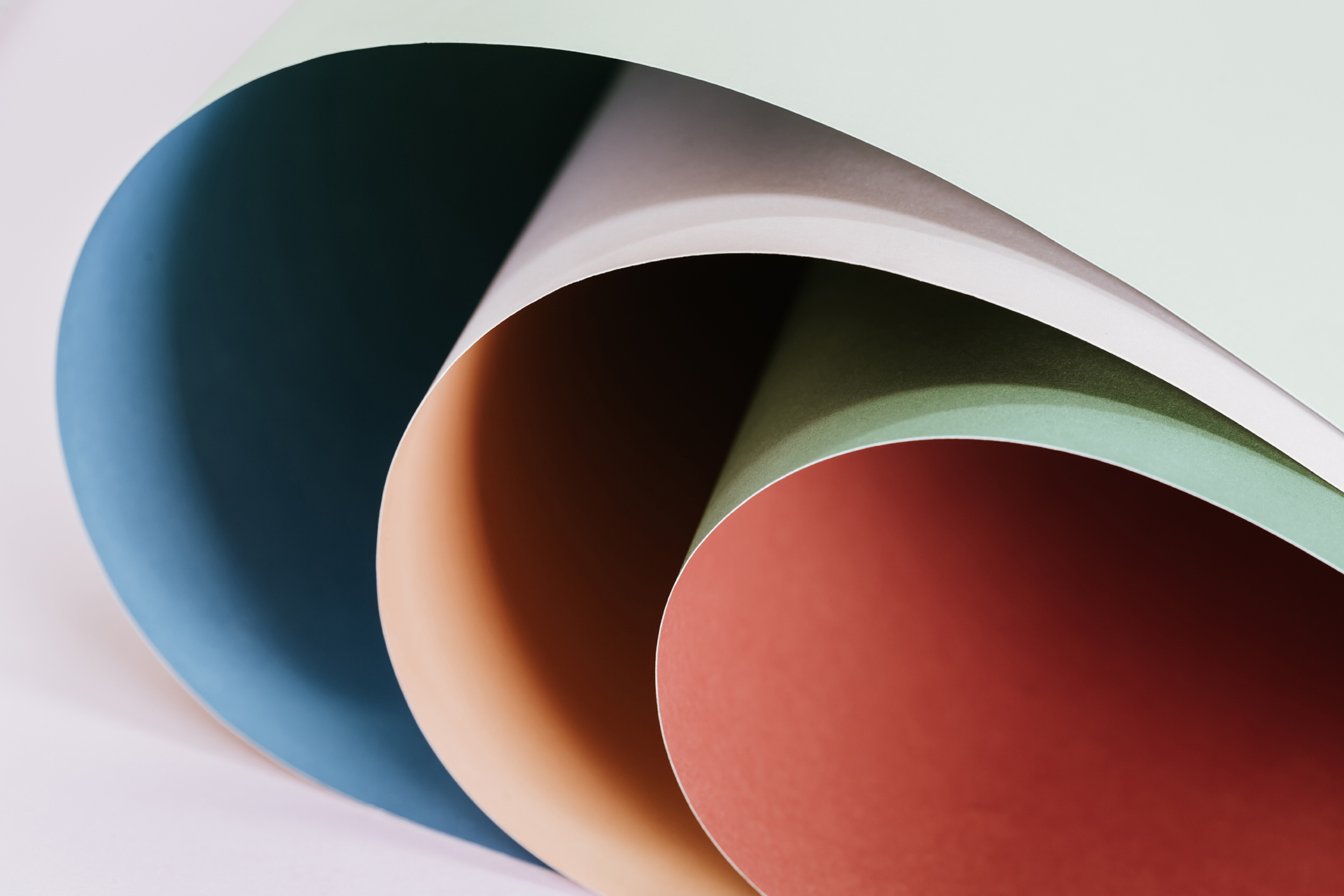Each type of paper has a weight, ranging from the lightest of flyers to the heaviest of coffee table books.
Paper weight, or grammage, is the weight of a sheet of paper with a surface area of one square metre. In simple terms, it is measured in grams per square metre, abbreviated as GSM. Generally, the higher the GSM rating, the more wood pulp is required to produce the paper, and the heavier the paper will be.
Paper weight is not the same as paper thickness. Paper thickness, (also referred to as bulk, or calliper) is measured in microns, short for micrometre. One micron is one-millionth of a metre thick.
Paper thickness is determined due to the type of wood pulp the paper is made from and methods used in its production. Bulking involves adding compounds to the cellulose fibres for making them bulkier. Calendaring compresses paper fibres between high pressure rollers to make them thinner. It is therefore possible to have two paper stocks with the same weight that look, feel and behave very differently from each other.
Then, there’s the choice between uncoated paper – also known as bond, offset or laser paper – and coated with gloss, silk or matt.
Uncoated paper is ideal for writing on and non-commercial printing. Glossy paper has a high shine and feels smooth to the touch. Its slight reflectivity makes it a popular choice for magazine covers, leaflets and flyers. It’s perfect for photography, colours are vibrant but its glossy surface can show fingertips.
Silk has a soft, smooth surface, without shine. Matte paper is soft and slightly textured, making it ideal for books and large copy-based print. Matte performs excellently in strong natural light, as well as dim, difficult lighting conditions.
With so much choice, it’s unsurprising if you’re unsure of which paper to choose for your next print job. Follow our guide to find the perfect type of paper for your needs.
